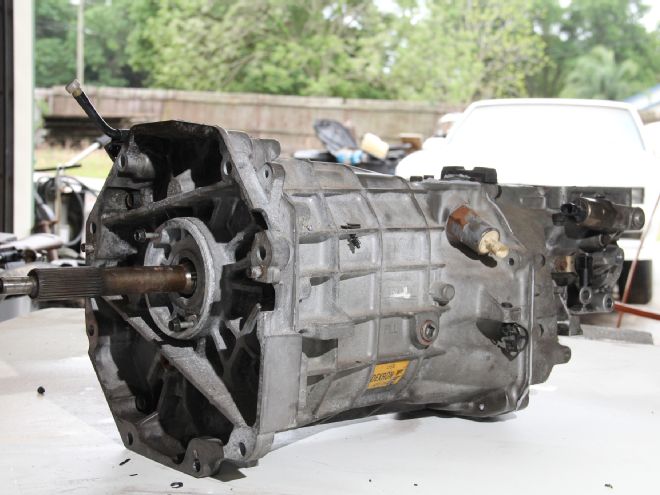
Want to row your own gears, make gobs of power, and even get decent gas mileage on the highway? The T56 is the ticket. This six-speed wonder was designed and built by Borg-Warner originally, though manufacturing switched over to Tremec in 1998. In recent times, the T56 transmission has become synonymous with LS-powered Pro Touring builds, but it actually debuted in the 1992 Dodge Viper and 1993 Camaro Z/28. It eventually replaced the ZF six-speed in the Corvette when the C5 was developed using a transaxle arrangement. Over the years, the T56 took on a several different forms in the GM world—from the F-bodies to the Corvette, GTO, CTS-V, and SSR pickup. Each of these had its own distinct nuances, including different gear ratios. And, of course, just when we started to get a handle on it, Tremec introduced the TR6060. Thankfully, we are here to walk you through the differences, how they are put together, and even a few upgrades needed to breathe life into a worn-out unit.
Case/Midplate/Tailhousing
Among the different units, externally the T56 is nearly the same for all except the Corvette. As you may know, the transmission in the C5 and C6 bolts directly to the rearend housing at the output. The input connects to the torque tube, which houses a prop shaft to connect to the clutch and flywheel. As such, the Corvette T56 has a different midplate, which is the plate that seals the front of the transmission. In a normal arrangement, this is where the bellhousing bolts to the trans. Note that if you wish to convert an LT1 T56, you will also need to swap the midplate. At the rear, the tailhousing is obviously significantly different on a Corvette since it mates directly to the differential housing. However, all others do not, which is typically where the shifter mounts (more on that in a second). Converting a C5 or C6 T56 for use in a hot rod certainly has its advantages, which will also be covered later. But just know that at the very least you will need a midplate (PN 19132919) and tailhousing (PN 12369468) from GM.
The longer external dimensions of the TR6060 can sometimes be prohibitive to certain builds, but it boasts a number of advantages. The case is noticeably thicker than the T56, reinforced at all the critical areas, including at the flanges. The tailhousing is about 3 inches longer than your typical F-body or GTO and usually has a CV joint instead of a slip yoke. Swapping the tailhousing is a common fix, though it requires some additional parts swapping. The midplate is another noticeable departure from the T56, which has provisions for an oil pump. This pump is used in conjunction with a trans oil cooler standard on the Camaro, Corvette, and CTS-V.
Shifter Location
Each chassis has a unique shifter location. The Corvette obviously mounts the shifter on the torque tube, not the transmission, so it uses a very different shifter rail. The F-body bolts directly to the transmission on the tailhousing. GTOs mount in a similar location, though, offset and pushed back. The shifter handle is actually behind the transmission, which means shifts are "indirect." The CTS-V's shifter is an even more exaggerated version of the GTO, placing the shifter another 2 inches back, completely behind the tailhousing (as such, it has a unique tailhousing). The TR6060 in the 2008–2014 CTS-V and 2010–2015 Camaro SS both used this remote mounting setup.
For the best shifter feel, mounting the shifter directly to the transmission like an F-body is preferred. That places the shifter handle 29½ inches from the edge of the F-body bellhousing or 24 inches from the midplate. From bellhousing to shifter, the CTS-V is 35 inches and the GTO is 33 inches. Tremec's aftermarket upgrade for the T56, the Magnum (essentially a TR6060), is about 1.5-inch longer than an F-body. The good news is that since the GTO and F-body use the same tailhousing, you can start with a GTO core and convert to an F-body shifter. And with any T56, you also have the ability to use the forward shifter location, which is about 13.5 inches from the back of the bellhousing. Great for trucks and some oddball swaps!
Internals
No matter whether it is for a GM, Ford, or Dodge, all T56 and TR6060 transmissions mount First through Fourth gears on the main shaft like a four-speed. Fifth and Sixth are both overdrive gears that are mounted after, like a two-speed with a reverser. Putting one together in many ways is easier than an old four-speed. As Greg Lovell of AntiVenom put it: "The old four-speeds are built inside the housing like a ship in a bottle. The T56 and 6060 are built on the endplate, then the case is put on like a shirt." It is important to note that the gear ratios can vary greatly from year to year and model to model. For example, the C5 Corvette Z06 had steeper gears than the base model to help it get off the line. The same ratios were later used in the C6's Z51 package. The C6 Z06 used the standard gear ratios since it had plenty of torque from the 427ci LS7, and the supercharged LS9 in the ZR1 model required even less help—it was given a 2.29/1.61/1.21/1.0/0.81/0.67:1 ratio split. More ratios are listed below for models that can be commonly found used (at a reasonable price). Depending upon the application, one might be more desirable than another.
ApplicationFirstSecondThirdFourthFifthSixth 1993 F-body (2.73 rear)3.36:12.07:11.35:11.00:10.80:10.62:1 1993 F-body (3.23 rear)2.97:12.07:11.43:11.00:10.80:10.62:1 1994–1997 F-body2.66:11.78:11.30:11.00:10.74:10.50:1 1997–2004 Corvette2.66:11.78:11.30:11.00:10.74:10.50:1 1998–2002 F-body2.66:11.78:11.30:11.00:10.74:10.50:1 2001–2004 Corvette Z062.97:12.07:11.43:11.00:10.84:10.56:1 2004–2006 Cadillac CTS-V2.97:12.07:11.43:11.00:10.84:10.56:1 2004–2006 GTO2.97:12.07:11.43:11.00:10.84:10.56:1
Besides the gear ratios, there are other internal differences to take note. To allow the Corvette to shift smoother than the standard T56, it was given triple (instead of double) cone synchronizers. Contrary to popular belief, the synchros lock the gear to the output shaft at the same speed to prevent grinding during the shift. They are not responsible for holding the trans in gear. In addition to the 1997–2007 Corvette, T56s in the 2004–2007 CTS-V, 2004–2006 GTO, and 2005–2006 SSR were all equipped with triple synchros. As such, each has a longer main shaft to accommodate it. If you were interested in using an F-body-style transmission, but with triple synchros, you'd need the GTO's main shaft because the Corvette's unique transaxle arrangement requires a specific main shaft. Though the length may vary, each GM T56 has 27 splines on the output of the main shaft. Many turn to the Dodge Viper's 30-spline shaft as an upgrade, which also requires a 30-spline slip yoke for the driveshaft, machining of the tailhousing, and a new seal/bushing. Aside from Ford applications, nearly every T56 uses a 26-spline input. The TR6060 features the best of the best T56 components—including triple-cone syncros, steel shift forks, and a 31-spline output—while still utilizing a 26-spline input, many of the same gear ratios, and the same basic construction. It is an evolutionary product that boasts many new upgrades from the case itself to the gears, bearings, synchros, main shaft, and cone rings. By increasing the surface area in critical areas and better supporting the input and main shaft, the TR6060 is a much stronger piece overall. Nearly doubling the torque capacity comes at a cost that is equal to just over 20 pounds. If you plan on making 700 lb-ft or more, then this is an easy tradeoff. If you come across a TR6060 in your quest for a six-speed, beware that not all are created equal. The Camaro SS version is not supported internally at the rear of the transmission (on the main shaft) like the others, though it is still a considerable upgrade from the standard T56.
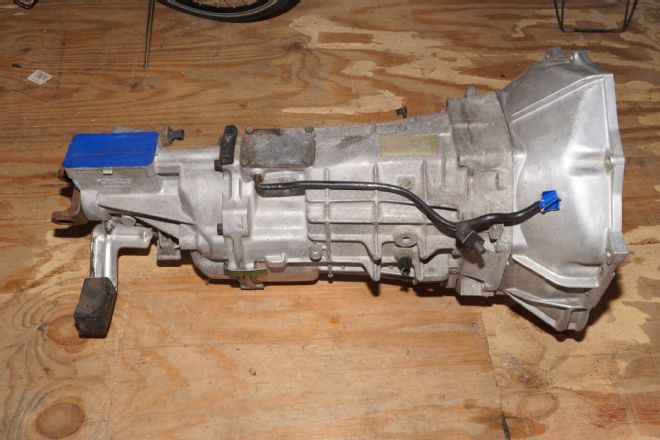
This is an LT1 T56 from an F-body, which can be hard to differentiate between the LS1 versions. The LT1 versions use an entirely different clutch and are not interchangeable. All early housing castings (including LS1s) carry the Borg-Warner logo as opposed to Tremec. They make a great trans for small-block builds, such as the 383 TPI engine this will be paired with in a third-gen Formula.
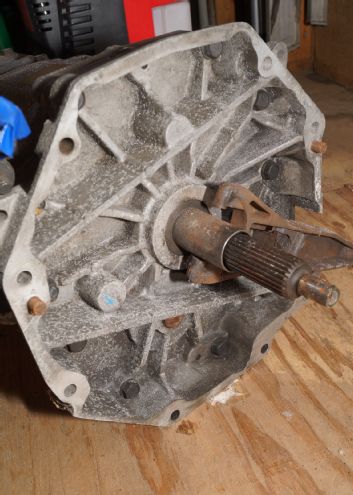
If you were interested in using this as a core for an LSx build, you'd need to swap out the midplate and input shaft. The LT1's "pull-style" clutch uses a shorter input shaft, among other things. Rockland Standard Gear sells a convenient kit with shims.
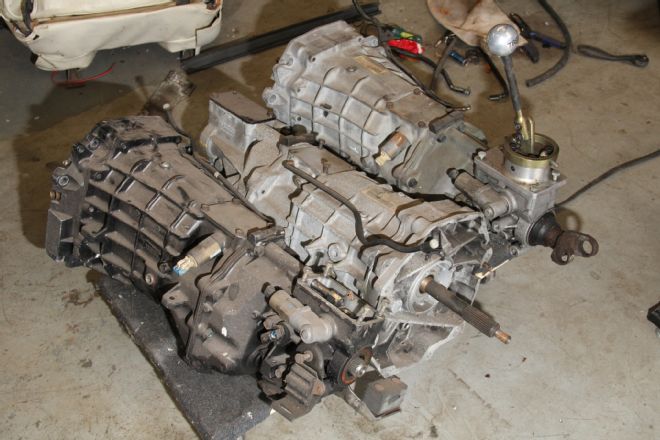
Here are three LS1 T56s in varying states. Each one of these has an F-body-style tailhousing. The black one even has the torque-arm mount intact. To convert a Corvette version, you'd need this tailhousing, midplate, main shaft, speedo ring, and the shift rail.
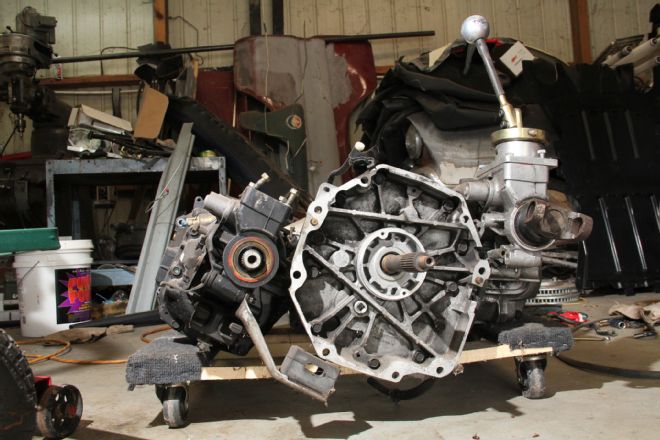
By looking at the midplate on the middle one, you can clearly see quite a bit of difference from the LT1.
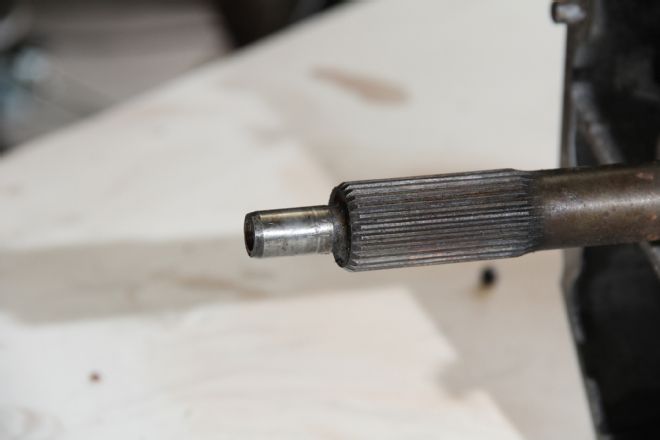
Greg Lovell at AntiVenom says the surface of the input shaft is a good indicator of wear. This trans had around 30,000 miles on it, so it is relatively young. You want to look out for galling, which could mean that it needs a complete rebuild and even replacement of hard parts (like gears).
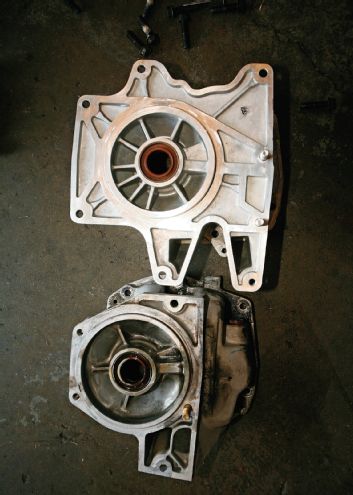
In case you're wondering, this is what the tailhousing looks like on a Corvette. Since it bolts directly to the rearend, it is noticeably thinner and does not have a shifter mount or the ability to slide on a driveshaft. The left is for a standard C6 and the right is a C6 Z06. The Z06 has a much stronger differential housing.
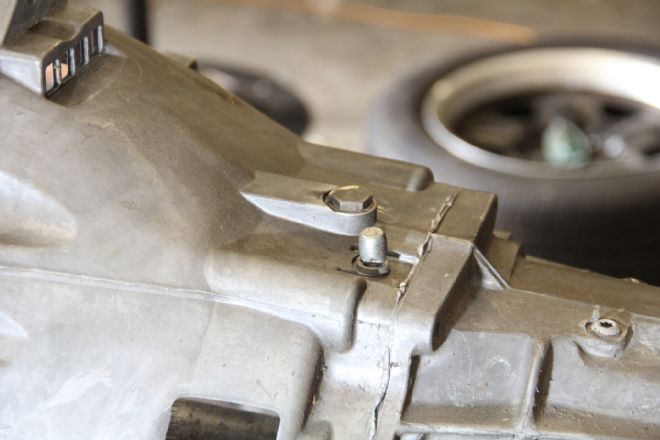
If you happen to spot a TR6060, the tailhousing can be a good indicator, but so is the detent. Tremec moved this to the top of the bellhousing. On a T56, the detent is on the side, right below the shifter mount.
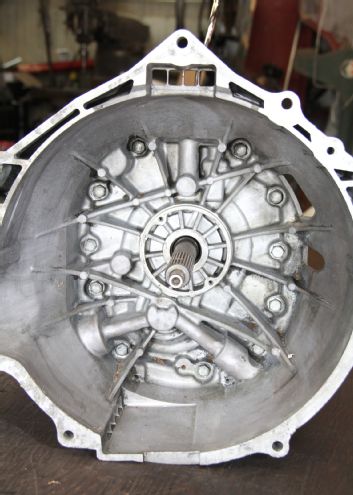
The midplate is quite a bit different, too, as the TR6060 comes from the factory with a trans oil cooler and needs provisions for the pump.
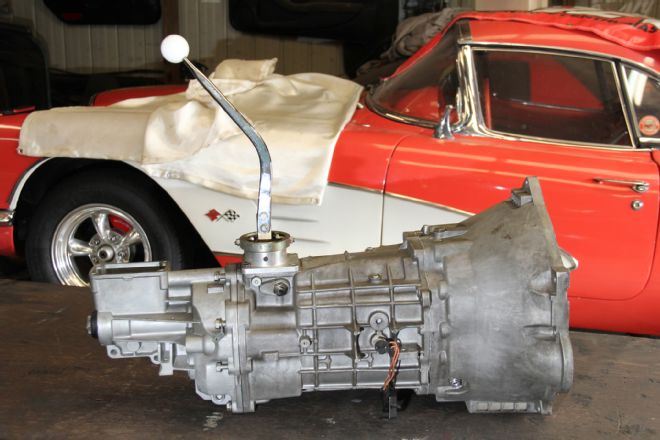
AntiVenom put this hybrid trans together for a truck, which is essentially a TR6060 from a 2010 Camaro SS with an SSR tailhousing, Pro 5.0 2003–2004 Cobra shifter mounted in the forward position, Hurst S10 handle, and Magnum 31-spline output shaft. Greg called this a strong and "inexpensive" trans. The Camaro trans has very steep gears (3.01 First), which may not be ideal for some. Notice that the bellhousing is integrated on the TR6060.
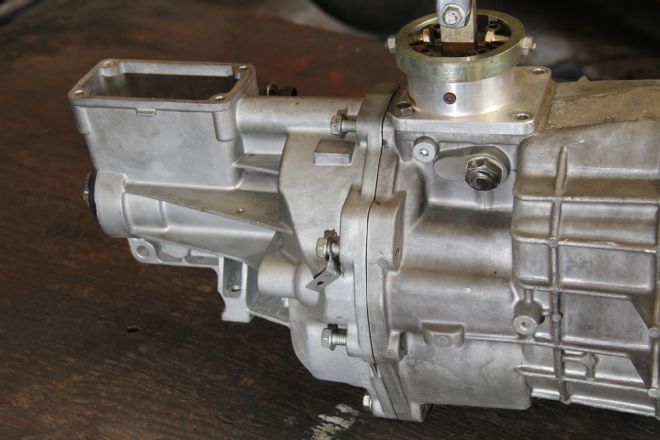
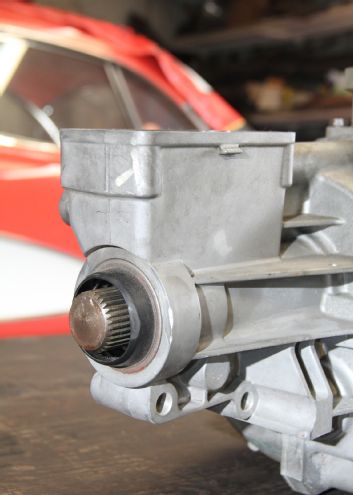
The SSR, F-body, and GTO all have the same-length tailhousing. However, the SSR has a massive 32-spline (1.375-inch diameter) output shaft. Since the 2010–2014 Camaro TR6060 uses a three-bolt CV joint to connect to the driveshaft rather than a traditional slip yoke, it is recommended that you swap out the tailhousing and output shaft anyway.
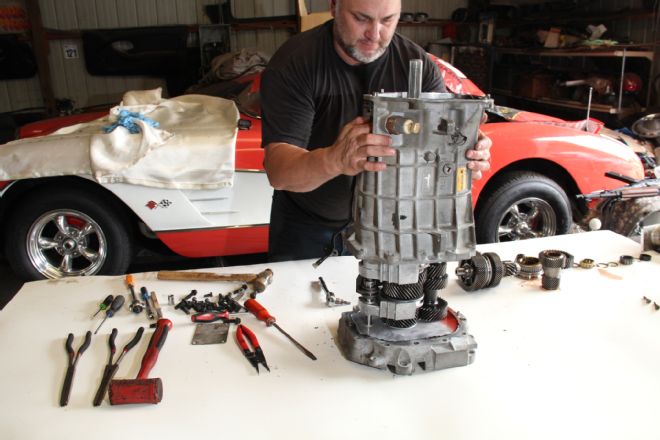
Lovell walked us through the disassembly and basic rebuild of a 30,000-mile T56 with fresh synchros for a second-gen Camaro. He started by removing the tailhousing, unbolting the midplate from the case, and removing Fifth, Sixth, and Reverse. Basic handtools are all that is needed, though they may not be exactly what you have in your toolbox at the moment. There is a fixture you can get from GM that mounts to the edge of a workbench (if you have a nice, sturdy one), but you can use an old tire or cut a hole in a wood table.
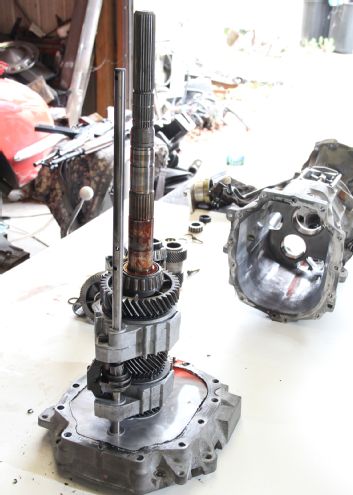
With the case removed, you can see the guts of the T56—First through Fourth, that is.
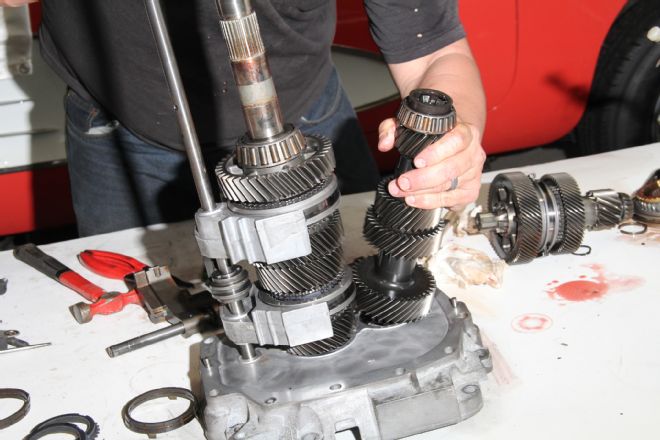
There is a main shaft (on the left) and a counter shaft (right). First, Second, and Fourth gear are on the main shaft, while Third is on the counter shaft.
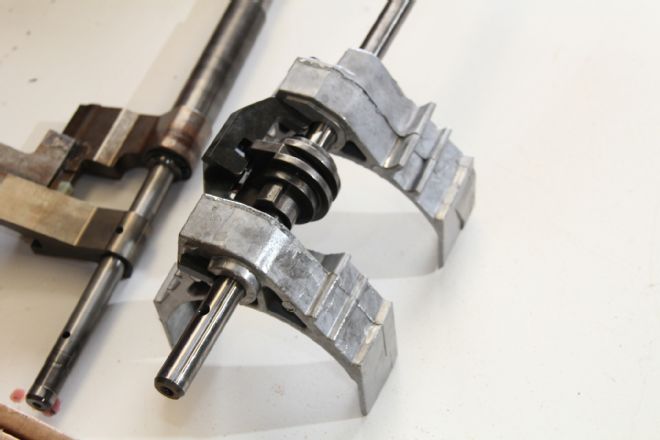
All GM T56s came with aluminum shift forks, which can wear over time (along with the pads). The Viper/Cobra-style three to four steel forks are preferred, as are bronze fork pads for First and Second and Third and Fourth. Shift forks engage the slider gears and push them into position. This locks the desired gear to the shaft. If your transmission won't stay in gear, this could be the culprit.
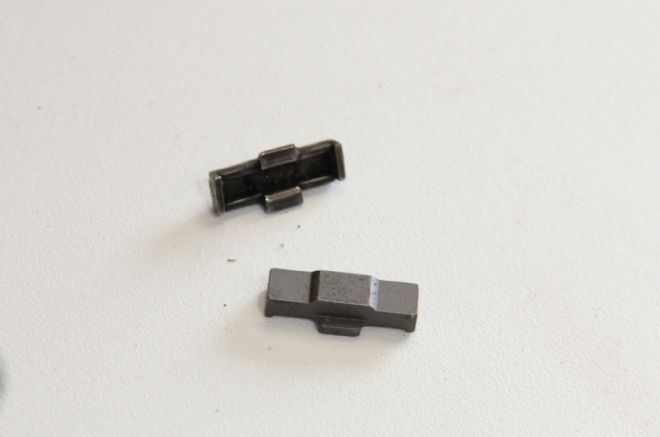
Lovell says these billet synchro keys are the best upgrade you can make to a T56. The keys stop the shaft and synchro ring so you can shift. The keys and the synchro rings were purchased from American Powertrain, though we've also had great service from Tick Performance, D&D Performance, and Hawks Third Gen Parts.
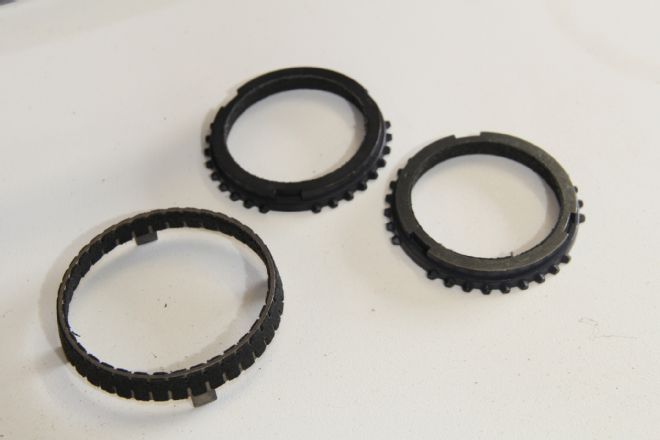
As you can see, the synchronizer rings are made of carbon fiber and Kevlar. The reverse ring is made of brass and should also be replaced periodically. In a basic rebuild kit, you will also find new seals, shift-fork pads, retainer springs, and a shifter bushing for around $325.
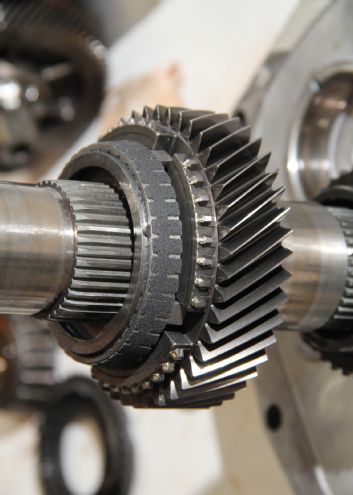
The synchro rings are a wear item, and when they wear out, the synchros get too close to the gear and will grind going into gear. When assembling, you must take note that the Fifth/Sixth synchros are smaller than the Third/Fourth and First/Second.
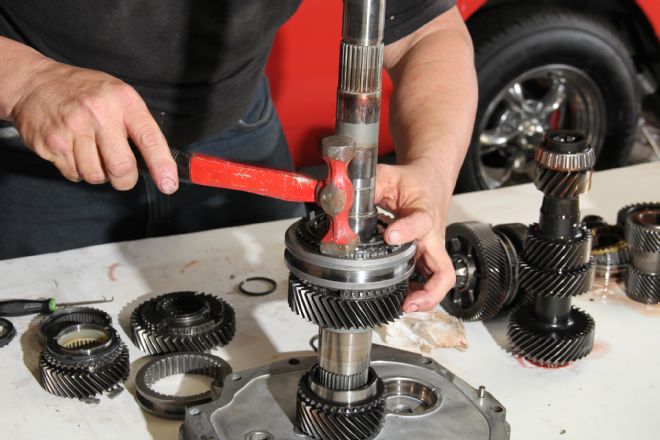
As you can see, the rings are sandwiched between the gear and the synchro. They act as a clutch, sitting on the tapered cone of the gear. The rings stop the gear from spinning in order to allow the slider and gear to couple—thereby synchronizing and locking it to the main shaft.